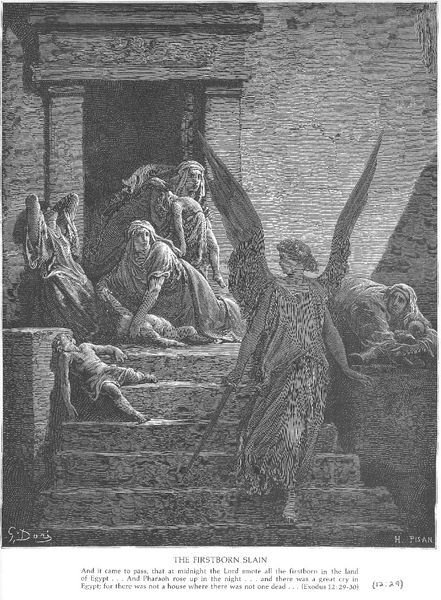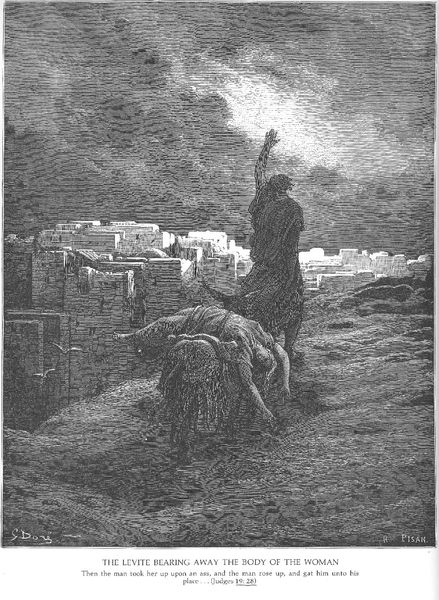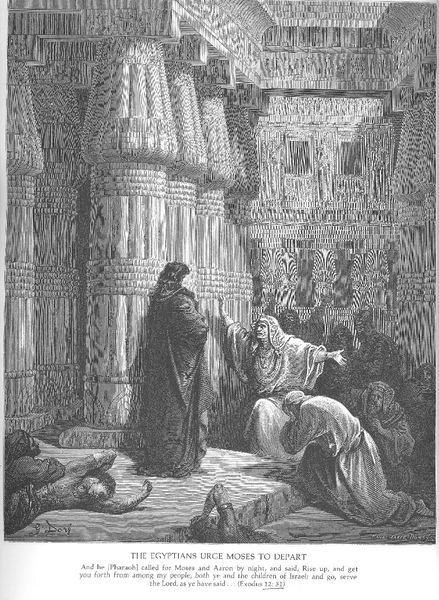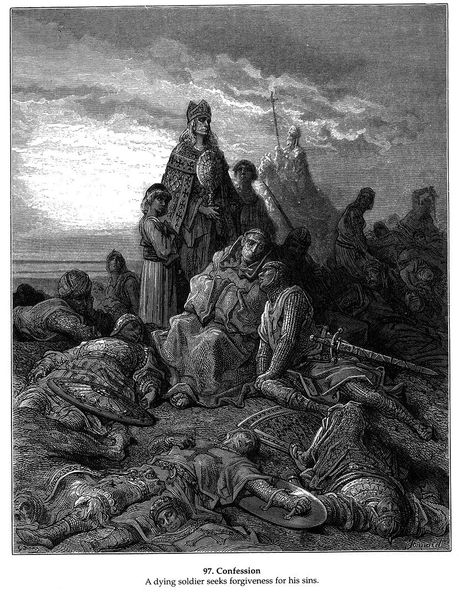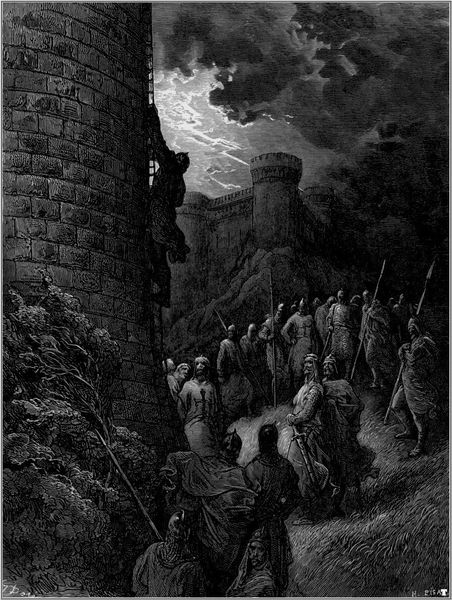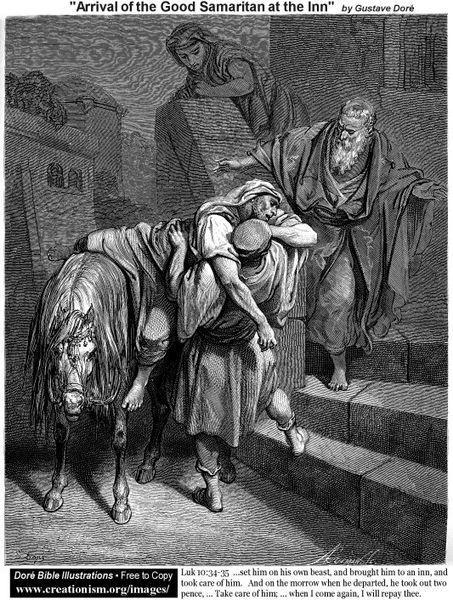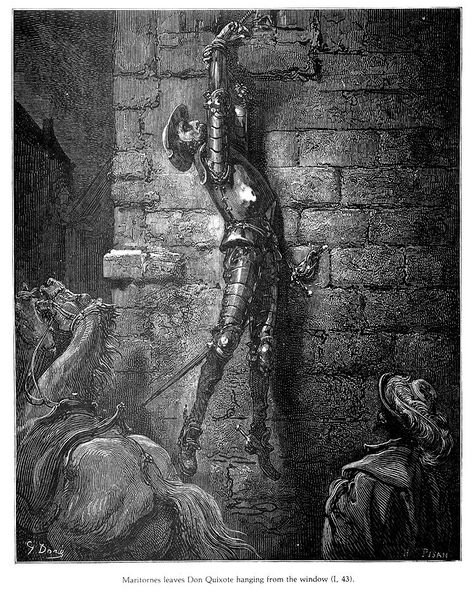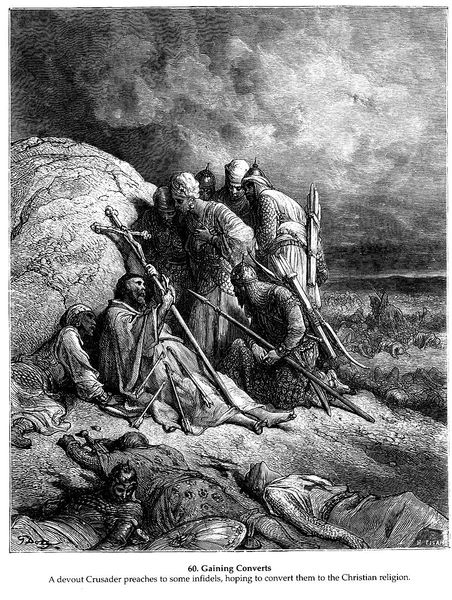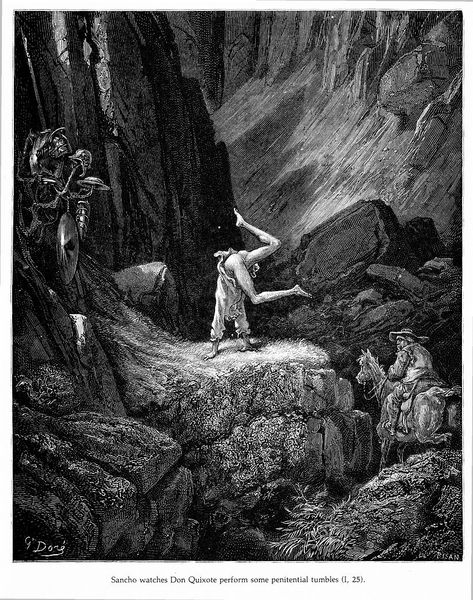
drawing, print, photography, ink, engraving
#
drawing
#
narrative-art
# print
#
war
#
landscape
#
charcoal drawing
#
photography
#
ink
#
black and white
#
orientalism
#
history-painting
#
engraving
#
realism
Copyright: Public domain
Curator: This print, titled "An Enemy of the Crusaders" by Gustave Doré, depicts a powerful, albeit Orientalist, view of conflict during the Crusades. The dramatic landscape, the figures posed in distress...what's your initial reaction? Editor: I'm struck by the contrast. There’s a very active, almost frantic energy in the foreground figures, then this stoic city in the distance, and smoke in the sky. It feels… ominous. How do you interpret this work within its historical context? Curator: That sense of foreboding is crucial. Consider that Doré created this imagery during a period of intense colonial expansion and the romanticization of the ‘Orient’ in European art. This work isn't just about a historical clash. It implicitly engages with power dynamics and the perception of the "other". The 'enemy' is observed, almost dissected, not engaged as an equal. Editor: So, it's less a straightforward depiction of a historical event and more a commentary on the dynamics of power? The figures are positioned so the city, their target, is in full view. The figures almost blend into the rocks, into the natural landscape around it. Curator: Precisely! Doré utilizes light and shadow to establish a visual hierarchy. Ask yourself, whose perspective are we invited to share? Are we meant to empathize with these figures, or observe them as exotic adversaries? The landscape isn’t a neutral backdrop. It is imbued with the weight of their perceived otherness, and used to emphasize their opposition to European values, and the smoke reminds us of their imminent doom. Editor: That's a really important distinction. I was initially caught up in the drama of the scene, but now I see the Orientalist framing more clearly. It is designed to incite an emotive and othering response, which then justifies any means of crushing this "enemy". Curator: Indeed. Recognizing these loaded perspectives helps us critically examine not just the artwork, but the narratives of conflict and cultural difference that persist today. What will you take away from this engraving? Editor: I’ll definitely be more aware of how historical artworks can reflect and reinforce existing power structures. It goes beyond the surface level depiction and dives deep into social and political narratives. Thanks so much!
Comments
No comments
Be the first to comment and join the conversation on the ultimate creative platform.

